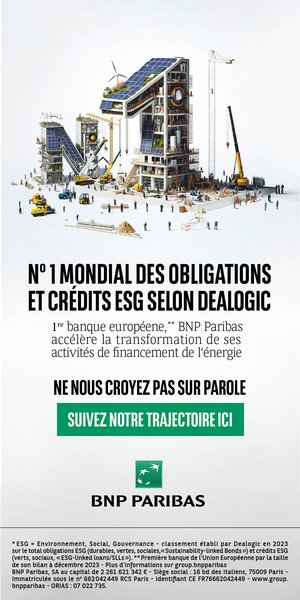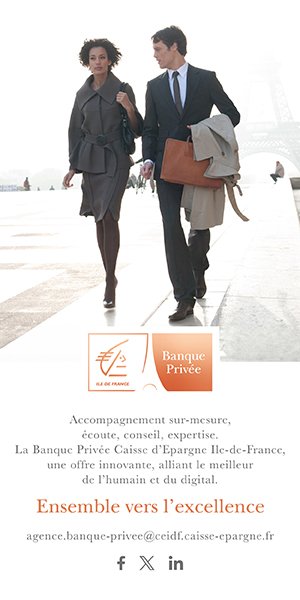Politique Internationale — A few years ago, you published L’Archipel français (Seuil), a book whose title hints at a fragmented country. What guided this work?
Jérôme Fourquet — This book is the fruit of a long-term project, the result of twenty-five years of opinion polls and sociological studies. I’ve published a number of articles, but a book allows me to give greater coherence to an overall vision, to reflect in greater depth and to map out perspectives. In this case, the landscape painted at the time shows a fragmented society, in the sense that the main collective points of reference that had been anchored until then had broken down. In the early 1960s, to use a colourful phrase, France was a lot like the confrontation between Don Camillo and Peppone: some 35% of people went to mass on Sundays and almost 25% voted for the Communist Party in elections. Today, by way of comparison, barely 3% go to church and Fabien Roussel, the PC candidate, scored 2.5% in the last presidential election. In short, while 60% of individuals were spontaneously attached to one of these two blocs, two generations later there is almost nothing left of them.
Another factor in France’s fragmentation is the weight of the major mass media: in 1990, a television channel like TF1 had a 45% market share; it now has 18%. Admittedly, it continues to play an important role in the audiovisual landscape, but to a much lesser extent. The print media’s audience is even more explicit: forty years ago, when a group of intellectuals signed an opinion piece on the front page of the Nouvel Observateur, it made headlines; this is no longer the case, far from it. And this is no exception: other magazines that were big names at the time, such as Le Point and L’Express, have seen their impact wane.
I’m not going to list all the factors that have contributed to the fragmentation of France, but some stand out more than others, in particular the phenomenon of migration. In 1960, children given an Arab-Muslim name accounted for no more than 1% of births; by 2024, the figure had risen to 21%.
P. I. — What are the main explanations for this fragmentation? Is it driven by specific elements or events?
J. F. — Of course, political, economic and social developments have had an impact, as we’ll come back to later. But that doesn’t explain everything: over the last few decades, we’ve seen an empowerment of the individual, with a desire for emancipation from traditional frameworks. At the time, there were many such frameworks – religious affiliation, support for a political force, marriage, starting a family, reading a newspaper, etc. – which enabled people to be pigeon-holed into specific boxes. By way of illustration, 25% of families today are single-parent families: we are at the opposite end of the spectrum from the habits perpetuated for generations and generations. At the start of the 21st century, we are witnessing a spin off into several islands, to the detriment of the logic of blocks mentioned above.
P. I. — Has the economic crisis played a role in this fragmentation, or even splintering, of society?
J. F. — The sociologist Henri Mendras spoke of a powerful logic of ‘moyennisation’ or ‘averaging’ of society in the 1960s and 1970s. But since the end of the 1980s we have seen a reverse cycle of ‘demoyennisation’ or ‘de-averaging’. This does not mean the disappearance of the middle class, but rather an increased segmentation of the strata of society, illustrated in particular by consumer behaviour. Take the purchase of a car: for a long time, the French were united around the same models, with benchmarks such as the 4L or the Renault 5. Nowadays, the same car comes with an endless range of options, which makes the price vary significantly. The car is just one example among many, at the heart of a galaxy of products which, for the same type of vehicle, range from low- cost to top-of-the-range and which requires a much more detailed understanding of consumer patterns in general.
P. I. — Does this mean that people no longer feel they belong to the middle class?
J. F. — They’ve lost the habit of thinking in binary terms when it comes to social belonging. It used to be that, more or less, people reflexively situated themselves either ‘at the top’ or ‘at the bottom’, which corresponded to a feeling either of a comfortable life marked by a certain material ease, or of a life that was much less so. Nowadays, those who spontaneously consider themselves to be at the bottom realise that some people occupy an even lower rung of the ladder. The sociologist Olivier Schwartz has described the way in which the vision of society has evolved in working-class circles. In their eyes, there are no longer two classes, but three: the rich; us, the middle or modest class; and the others. For the latter, whose degree of impoverishment is the greatest, a very ugly word has been invented: ‘cassos’, for ‘social case’ in the singular. ‘Cassos’ are people who live first and foremost on social assistance, the number of which has increased over time – RMI/RSA, CMU, ASS, etc. – in addition to initiatives such as the soup kitchens, Restos du cœur, a support system designed to prevent them from dropping out completely.
P. I. — Have we entered squarely into a risk society? With a feeling of fear towards almost any environment or behaviour...
J. F. — In the current context, there is at least one piece of good news: people are no longer afraid, or much less afraid, of becoming unemployed. The change is obvious: forty years ago, the fear was of losing one’s job. Today, people feel that they can bounce back fairly quickly.
However, while the fear of unemployment has faded, other factors of concern have emerged, such as the fear of ‘social downgrading’. Who is affected? All those, and there are many, who have nothing left in their bank account after paying all the bills. The Gilets jaunes crisis has thrived exactly on this terrain. These are people who can’t get by, even though they work. But that’s no longer enough: many can no longer afford to take their children to the cinema or go on holiday, which in their eyes and those of their loved ones is a sign of their downgrading.
P. I. —What about eco-anxiety?
J. F. — When it comes to the most pressing fears, I usually put forward this trio: the ‘great downgrade’, the ‘great warming’ and the ‘great replacement’. The second concept obviously refers to eco-anxiety, with a number of associated terms – solastalgia, collapsology, etc. – that refer to the end of civilisation as a result of climate catastrophes. Covid has added an extra layer of tension to this anxiety.
As for the ‘great replacement’, the theme has also become an integral part of the debate: two expressions, which have almost become slogans, reflect its scope. The first – ‘Where the hell are we?’ – shows the astonishment of those who use it. The second – ‘We’re home’ – is a trivial phrase used to assert the right to a certain historical continuity. This fear of the ‘great replacement’ is, of course, fuelled by the many controversies surrounding security. Those who say ‘we are at home’ are the same ones who claim that society is no longer safe because ‘we are no longer at home’.
P. I. — You mentioned the loss of political influence. To what extent are the leaders in this sphere still capable of getting things moving? Particularly in terms of improving the economic and social situation.
J. F. — Politicians, especially if they are elected, have the means to have a significant influence on the country’s major developments. We saw this recently with pension reform. This is a major piece of legislation, in the sense that it concerns the population as a whole, and it is first and foremost the result of a political decision. Environmental issues, against the backdrop of the fight against global warming, also bear witness to the influence of elected representatives, with choices that have a structural impact on whole swathes of the country. This is particularly the case with the stated objective of selling only electric cars by 2035: this measure will have far-reaching repercussions on the industrial fabric as well as on the management of energy infrastructures. We could go on and on with examples of political orientations that are likely to change behaviour, with real cleavages between right and left. For example, an ecologist mayor of a regional city will be more inclined to install cycle paths than CCTV cameras. And the opposite holds for a right- wing mayor.
P. I. — Last summer, by all accounts, the Olympic and Paralympic Games gave France an enchanted interlude. Has it come to an end, or can it be extended?
J. F. — The Games were a reminder that although the country has been shaken by a number of upheavals, there are still cohesive forces and great moments of communion. Some of these levers of cohesion, such as public services and associations, have been in place for a long time. The Games were exceptional in that they enabled millions of people to feel the same thrill, against a backdrop of genuine joy, at a time when, just a little earlier, violent political battles were the order of the day. The limits of this summer parenthesis lie in the fact that it was precisely a parenthesis: the competitions had barely ended when the settling of scores linked to drug trafficking, brawls between teenagers and altercations between cyclists and motorists returned to the fore. Moral: it takes a lot more than an enchanted summer to alleviate all this ordinary violence.
P. I. — You have just published a new book, Métamorphoses françaises, état de la France en infographies et en images…
J. F. — Computer graphics offer the opportunity to show all the changes in French society in a very intelligible and particularly dynamic way. When certain aspects have been entrenched for a long time and tend to reinforce themselves, others emerge. All are illuminating. Here are just a few examples: births outside marriage, which accounted for 10% of all births in the early 1980s, have risen to 65% today. At the other end of the spectrum, cremations, which used to account for no more than 1% of funerals, now represent 43%! In another area – our relationship with our bodies – tattoos have become the norm: some 20% of French people now have a tattoo, whereas only forty years ago this practice was totally secret...
P. I. — After all these years spent at the bedside of public opinion, why are you still so passionate about these issues?
J. F. — Firstly, I’m deeply attached to my country; secondly, for several years now we’ve been going through a period of unprecedented change. Many phenomena are now connected, and as soon as you touch one element, it has repercussions on the others. It’s hard to ignore this environment, which is as interesting as it is stimulating to analyse.




















